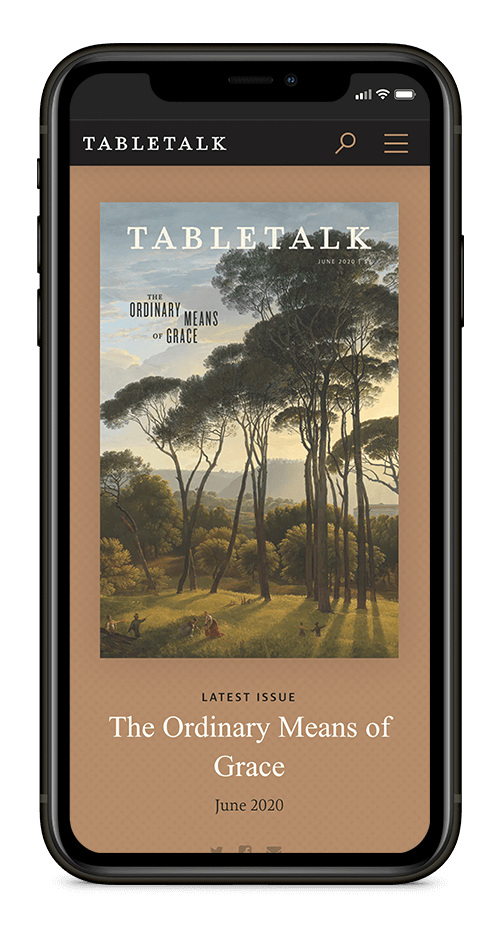
Request your free, three-month trial to Tabletalk magazine. You’ll receive the print issue monthly and gain immediate digital access to decades of archives. This trial is risk-free. No credit card required.
Try Tabletalk NowAlready receive Tabletalk magazine every month?
Verify your email address to gain unlimited access.
Acts 3:1–10
“Peter said, ‘I have no silver and gold, but what I do have I give to you. In the name of Jesus Christ of Nazareth, rise up and walk!’ And he took him by the right hand and raised him up, and immediately his feet and ankles were made strong” (vv. 6–7).
Returning to the book of Acts today, we resume our study in chapter 3, where Luke records some events that took place not long after the coming of the Holy Spirit. The Apostles were still ministering in Jerusalem, as we see in verse 1, where Peter and John go “up to the temple at the hour of prayer, the ninth hour.” This refers to one of the two main daily times of prayer at the temple, the afternoon prayer that took place at about 3 p.m., when the twilight sacrifices were offered (Ex. 29:39). The other occasion for prayer took place at 9 a.m.
We have already seen that the earliest Christians would attend the temple (Acts 2:46), since during this transitional period they were still learning all the ramifications of the death of Jesus, which brought an end to the need for the temple and its sacrifices (see Heb. 10:1–18). On the occasion that Luke describes, Peter and John encountered a lame beggar at “the Beautiful Gate,” which is likely the same gate known in other ancient texts as the Nicanor Gate. All the gates leading into the temple were adorned with precious metals, but this gate was covered with bronze, not silver or gold like the others. Josephus, the famous first-century Jewish historian, reports that although this gate was covered with a metal of less value, it was the most ornate, the most exquisitely crafted, and the most beautifully adorned of all the temple gates. Thus, Luke calls it “the Beautiful Gate.” This gate was a popular entrance to the temple complex, so it makes sense that a beggar would be present there, where he would have a good chance of collecting alms. This beggar asked for alms from Peter and John.
The Apostles lacked silver and gold, but they had something far more valuable—the Lord Jesus Christ. So they commanded the man to “rise up and walk” in the name of Jesus. Taking the beggar’s hand, they pulled him to a standing position, and he began to leap, walk, and praise God (Acts 3:3–8). Although the beggar expected temporary relief from his poverty, he received something far better—permanent healing of his lameness. We think immediately of similar miracles of Christ, since He likewise caused the lame to walk (Matt. 15:29–31). The fact that the miracles of the Apostles and of Christ are so similar is no accident, for the Apostles were instruments through whom Jesus worked. Thus we see that the acts of the Apostles are really the acts of the Lord Jesus Christ.
Coram Deo Living before the face of God
Although believers are called to help relieve the material suffering of the poor as we are able (Gal. 2:10), such relief is not the best gift that we can give people. The most valuable thing that we have to share with others is the gospel, which provides eternal salvation that will be consummated in the restoration of the physical universe (Rev. 21:1–22:5). As we seek to help others with their material needs, let us not forget to proclaim the gospel to them.
For further study
- 2 Samuel 9
- Isaiah 35
- Luke 5:17–26
- Acts 8:4–8
The bible in a year
- Exodus 29–30
- Matthew 22:1–22